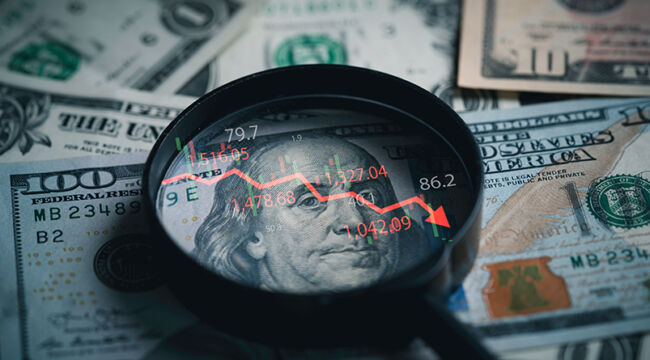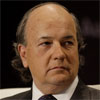Rickards: A U.S. Recession is Coming
The new Trump administration is off to a fast start. All of the key nominations for the Trump cabinet and White House staff have been made, the Senate confirmation hearings (where needed) have mostly been held and some of the key positions have already been filled. Trump signed a large pile of Day One executive orders over the course of January 20 and 21 immediately after the inauguration. More executive orders are in the pipeline.
This all stands in sharp contrast to Trump’s 2016 transition process where the nominees were not well chosen, confirmation went slowly, and the deep state holdovers from the Obama administration were still in place. What a difference four years makes.
We are extremely optimistic about Trump’s economic plans. Whether by executive order, regulatory processes or legislation, Trump will be pursuing lower taxes, less regulation, and higher tariffs on foreign trading partners in order to promote high-paying jobs in the U.S.
Some complain that Trump’s America First policies may hurt growth in places like China, India and Brazil. That’s entirely possible but too bad. China needs to figure out how to Make China Great Again. That’s China’s job, not the job of the United States.Trump’s job is to Make America Great Again and he’s off to a good start.
The U.S. Consumer of Last Resort
Simply put, the U.S. consumes more than it produces. Americans buy consumer goods and solar panels from China, semiconductors from Taiwan, steel from Japan and automobiles from Korea. The difference is purchased from abroad and paid for with U.S. dollars, which foreign central banks use to load up on U.S. debt.
The U.S. runs a trade deficit along with a budget deficit and is in debt to the world. Those days are over. Asians, Africans and Latin Americans can still sell goods to the U.S. but they’ll have to manufacture those goods in the U.S. to get over high tariff walls. The result is good paying jobs in America.
With higher earnings, Americans can save more. Foreign investment in the U.S. will also rise as foreign manufacturers build here to avoid tariffs. Eventually, higher savings and higher investment will close the production gap and reduce the trade deficit. Among other consequences, look for a stronger dollar as the world scrambles for dollars to invest here. That makes the rest of the world cheaper for U.S. consumers and reduces inflation also. It’s a win-win-win policy.
3 Threats on the Horizon
The fact that Trump’s policies are sound, and the long-term economic prospects are good, should not divert us from the fact that there are serious economic challenges in the near-term. These will not be Trump’s fault because they have been years in the making. But the damage may emerge early in Trump’s term.
This scenario is not unlike the start of Ronald Reagan’s first term in 1981. The U.S. had its worst recession since the end of World War II during 1981-82. (We’ve had worse recessions since, but 1981-82 was the worst up until that time).
It took a few years for Reagan’s policies to take effect. The period 1983-1986 was one of the strongest growth spurts in recent history with 16% compounded real growth. But we had to get through a rough patch first.
Here’s a summary of three economic threats to investors that may emerge over 2025 before we get to higher ground expected in 2026 and beyond:
1. Stock Market Crash
Markets are at or near all-time highs based on every available metric: P/E ratios, the CAPE ratio, market cap/GDP ratio, concentration risk, etc. This stock market bubble is amplified by indexing, investor complacency and analyst euphoria. When such conditions have existed in the past, they have always been followed by market crashes of 50% to 90% unfolding over several years. Examples include the Dow Jones Industrial Average (1929), the Nikkei (1989), NASDAQ (2000), and the S&P 500 Index (2008).
We are now positioned for an historic crash. The specific cause does not matter – it could be war, natural disaster, a bank or hedge fund collapse or other unexpected event. What matters is the super-fragility of the market when the trigger is pulled. This is why Warren Buffett has over $300 billion in cash and why central banks are buying gold.
Investors should prepare now; don’t be the last one to know. Strategies include reducing allocations to stocks, increasing allocations to cash and purchasing some gold (up to 10% of your investable assets) to participate in a flight to quality.
2. A U.S. Recession Is Coming
This is problematic for stocks independent of any crash potential. Inflation has persisted, energy prices are back up to interim highs, unemployment is going up, job hiring is frozen, and the manufacturing sector is contracting.
Federal reserve rate cuts won’t help. They do not provide “stimulus.” Rate cuts are a sign of economic weakness, not strength. The Fed is not leading the interest rate market. They are following the market down.
Of course, a recession could trigger a market crash. But even if it does not, recessions are typically associated with 30% declines in stock valuations over a year or less. The investment strategy for a recession is substantially the same as the crash strategy.
3. Currency Wars Are Back and Trade Wars Are Coming
The super-strong dollar today makes it difficult for other countries to buy U.S. goods. Tariffs will make the global dollar shortage worse as foreign investors seek dollars to jump the tariff walls and invest directly in the U.S.
Both the strong dollar and the coming U.S. tariffs invite retaliation by trading partners who will put up their own tariff walls. The result will be a global contraction in trade that could resemble the trade collapse of the 1930s during the Great Depression. U.S. stocks fell 85% from October 1929 to June 1932 during that episode of trade wars. A repeat could be on the way if economies such as China (that should be boosting consumption) choose to fight trade wars instead.
We’ll be closely monitoring all these threats and provide you with the best in analysis and recommendations in the coming weeks and months.



Comments: